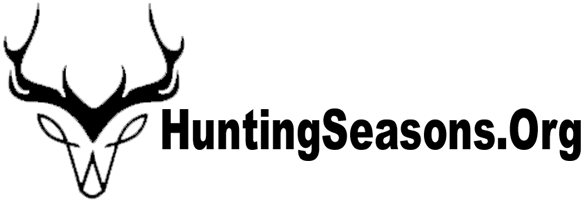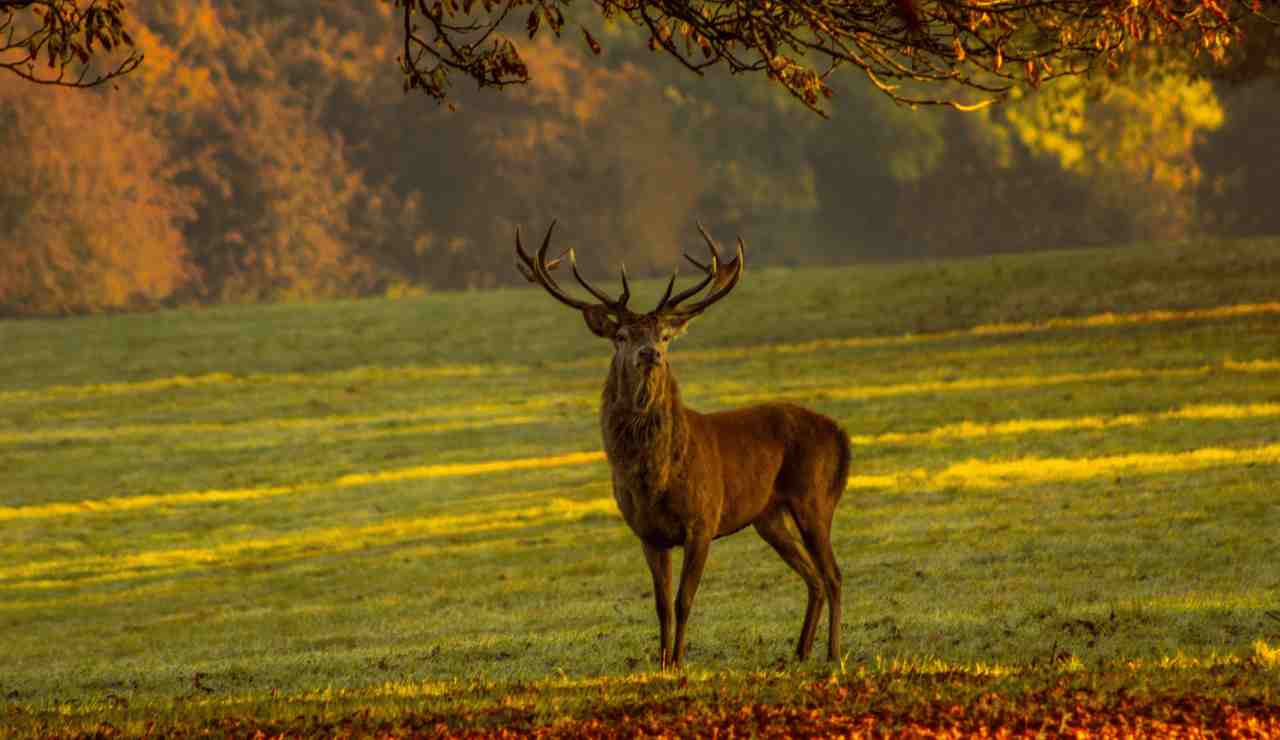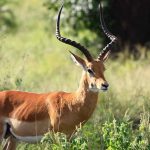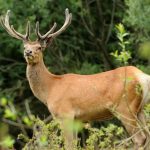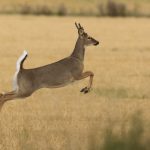Get Set for the Thrilling Wisconsin Deer Hunting Season 2023-2024! Embrace the adventure and excitement of the great outdoors as you pursue a magnificent buck this season. With Wisconsin’s vast deer population and scenic hunting grounds, you will surely have a thrilling and rewarding hunting experience. The Wisconsin DNR has put strict regulations to ensure a safe and fair hunt for all, so familiarize yourself with the rules before heading out. Brace yourself for a season filled with excitement, challenges, and the chance to bring home a prized trophy.
Wisconsin Deer Season
| WI Deer Season | Hunting Start Dates | Hunting End Dates |
|---|---|---|
| Archery and Crossbow | 16-Sep-23 | 7-Jan-24 |
| Archery and Crossbow | 16-Sep-23 | 31-Jan-24 |
| Gun hunt for hunters with disabilities | 7-Oct-23 | 15-Oct-23 |
| Youth deer hunt | 7-Oct-23 | 8-Oct-23 |
| Gun | 18-Nov-23 | 26-Nov-23 |
| Muzzleloader | 27-Nov-23 | 6-Dec-23 |
| December 4-Day Antlerless-Only Hunt | 7-Dec-23 | 10-Dec-23 |
| Antlerless-Only Holiday Hunt | 24-Dec-23 | 1-Jan-24 |
Sandhill Wildlife Area Gun Deer Season
| WI Gun Deer Updates | Details |
|---|---|
| Unique Gun Deer Hunting Opportunity | As part of a deer population study, the Wisconsin DNR is providing a special opportunity for firearms deer shooting at Sandhill Wildlife Area near Babcock. |
| Hunt Dates | The Sandhill Wildlife Area will host the Gun Deer Hunt on December 9 and 10, 2023. |
| Application Deadline | Applications for special permits are required from hunters who are interested in participating and are due on October 13, 2023. |
| Eligibility | All qualified licensed gun hunters may apply for this hunt. |
| Study Purpose | The research uses GPS-collared deer and trail camera images to assess several strategies for predicting deer population on tiny sizes. |
| Reducing Deer Population Density | Participants will participate in the research project while also contributing in lowering the deer population density on the land. |
| Application Submission | Applications may be sent or submitted through email to the specified address. |
| Notification of Successful Applicants | One week after the application deadline, those who are chosen will be contacted. |
| Special Hunting Rules and Regulations | The unique hunting guidelines for the Sandhill Wildlife Area must be read and followed by all participating hunters. |
| Harvest Authorizations | Two harvest permits, one for either sex and one for antlerless animals only, will be given to each participant. These permits are only good for the two-day hunt in Sandhill Wildlife Area. |
| Study Information | On the Outdoor Skills homepage for Sandhill Wildlife Area, you may find more details about the study, application materials, and other information. |
| Information about the study | Sandhill Wildlife Area’s Outdoor Skills webpage |
Elk Season
| Wisconsin Elk Season | Hunting Dates | Note |
|---|---|---|
| Elk (Early Season) | 15-Oct to 13-Nov (*TBC) | Clam Lake (Elk Management Zone) |
| Elk (Late Season) | 8-Dec to 16-Dec (*TBC) | Clam Lake (Elk Management Zone) |
Note: Tentative dates are mentioned for *TBC that means ‘to be confirmed’.
Deer Hunting License Cost
For Wisconsin residents, the cost is $12. For non-residents, the cost is $160 for the entire season or $42 for a 7-day period. Youth hunters under age 12 can purchase a license for $5. In addition to the cost of the license, hunters must also purchase a stamp, which costs an additional $5.
Licenses and permits can be purchased on the official website of the Wisconsin Department of Natural Resources, Go Wild, or at one of their sales locations.
Please note that these prices are subject to change and for the most up-to-date information, it is recommended to check the eregulations or Wisconsin Department of Natural Resources official website or call 1-888-936-7463.
Deer Hunting Regulations
- Deer hunting requires a Gun Deer, Archer, or Crossbow license. License holders must have a valid, unfilled harvest permission. Archer or crossbow license holders who want both weapons may need an upgrade.
- Deer licenses include harvest authorizations. Hunting locations determine the quantity and kind of license authorizations. The deer kind, weapon, open season, and hunting site determine the authorizations. One deer per permit.
- A Gun Buck Deer Harvest Authorization is usable in any state DMU with a gun deer license. It authorizes the harvest of one buck deer with any authorized weapon during firearm deer season, except in DMUs with antlerless-only hunts. Military members have exceptions.
- Any DMU in the state accepts the Bow Buck Deer Harvest Authorization. The license enables bow or crossbow hunting of one buck deer. Except in DMUs with antlerless-only hunts, the permission is valid throughout open archery or crossbow season.
- Each rifle, bow, or crossbow license grants 17-year-old hunters the Junior Antlerless Deer Harvest Authorization. The state’s DMUs may hunt one antlerless deer on the chosen land type. The license and weapon may be used during open deer seasons. Authorization holders can only fill it.
- Depending on the DMU, archer/crossbow or rifle deer licenses contain the Farmland (Zone 2) Antlerless Deer Harvest Authorization. The hunter may harvest one antlerless deer per permission. Any weapon may be used in any season with the necessary harvest license. Military and handicapped hunters are exempt.
- Bonus Antlerless Deer Harvest Authorizations are sold one per day, first-come, first-served. They allow harvesting one antlerless deer per permission in the selected zone, DMU, and land type. With the proper harvest permission, they may be filled with any weapon at any time.
- Metro Antlerless Deer Harvest With the purchase of an archer/crossbow or gun deer license, several metro subunits provide free authorizations. Select metro sub-units and land categories may sell bonus authorizations. They only apply inside metro sub-unit borders, the chosen DMU, and the defined land type (public-access or private). Dnr.wi.gov/topic/hunt/dmu.html has extensive maps.
- Deer carcasses from CWD-affected counties are regulated in Wisconsin. Licensed taxidermists and meat processors may transport CWD-affected wild deer corpses and parts within 72 hours after registration. Meat cut and wrapped, quarters or deboned, skins, completed taxidermy heads, antlers, clean skulls, and upper canine teeth may be carried without limits. Processors and taxidermists must be notified if they acquire CWD-infected deer carcasses. Before shipping deer corpses, verify state and provincial import laws. CWD Alliance: www.cwd-info.org.
- Hunters may cut a deer into five parts for simpler field disposal. The hide and lower legs do not qualify as one of these five pieces, but the head must stay connected. Before registration, only one quartered deer may be housed or moved with entire deer. The rear legs’ tarsus joints and front legs’ carpus joints may be removed. Remove all deer parts except the entrails from the field. Except for field dressing, skinning, and quartering, deer must stay intact.
- Wisconsin hunters may lure deer using fragrances. Deer should not be able to eat the fragrance. Hunting bait is limited to 2 gallons per 40 acres. Baiting near roadways, campgrounds, and bear/elk feeding locations is forbidden in several counties. Hunting bait must be destroyed after all deer seasons. Hunting and dog training need 10 days without baiting. Baiting is illegal.
- Wisconsin requires GameReg registration of deer by 5 p.m. the day after recovery. Gamereg.wi.gov, 1-844-426-3734, or registration stations are available for registration. Registration requires your deer harvest permission number. You’ll get a 10-character “W” confirmation number after registering. Search “GameReg” at dnr.wi.gov to discover more about GameReg.
- Wisconsin baiting and feeding regulations prohibit the use of any bait or feed material that contains any animal part or animal byproduct, is contained in or deposited by a feeder designed to deposit or replenish feed automatically, mechanically, or by gravity, or contains metal, paper, plastic, glass, wood, or other similar processed materials (exception for scent materials).
- Except for members of a rifle deer hunting party, it is prohibited to kill game for another person. Junior antlerless deer harvest authorizations for under-17-year-olds may only be filed by the recipient. Archers cannot hunt in groups. Two or more hunters must hunt deer together within sight or voice contact. Deer hunting with felons is prohibited. The young gun deer hunt is not open to adults. Group hunting mentors cannot use their mentee’s deer harvest permission.
- A hunter must have a permit to possess a deer carcass. Deer antlers shall not be removed, damaged, shed, or changed to prevent legality determination. Except for the head, skin (not in spotted coat), and antlers (not in velvet), selling, buying, or exchanging deer or deer components is forbidden. The department must provide formal permission to possess an albino deer, which is white except for the feet, tarsal glands, head, and portions of the head. During open deer season, velvet antlers and spotted hides cannot be sold or transferred. Albino and all-white deer are protected.
- The juvenile gun deer hunt is for 15-year-olds with gun deer licenses. All hunting locations statewide require that young hunters be accompanied by an adult. Hunters must wear bright apparel, excluding waterfowl hunters. Youth under 11 and without hunter education must follow hunting mentoring guidelines.
- Hunters with Class A, C, or D disability permits or Class B permits given for more than one year may also shoot deer hunt. These hunters need a rifle deer license and a sponsor to hunt from a car.
- Wisconsin offers the Gun Deer Hunt for Hunters with Disabilities to hunters with Class A, C, or D impaired permits or Class B permits granted for more than one year. Disabled hunters must contact a hunt sponsor before September 1. This hunt requires Gun Buck, Farmland (Zone 2), and Bonus Antlerless Deer Harvest Authorizations. The Farmland (Zone 2) Antlerless Deer Harvest Authorization may be used on any land type during this hunt. If the hunter does not fill the permission during this hunt, they must use it to harvest antlerless deer during subsequent deer seasons exclusively on the designated property type.
- The hunter must utilize the replacement permission to take an antlerless deer in the same county as the original deer or a CWD-affected county nearby. The replacement permission may be used to take antlerless deer in December and Farmland (Zone 2) antlerless seasons. The hunter must also wear bright apparel, have permission to hunt on private property, and obey hunter ethics and safety guidelines.
- CWD kills deer, elk, and moose by attacking their nerve systems. Prion proteins cause the illness, which may spread via polluted settings. Hunters should avoid CWD-positive deer, elk, and moose meat, according to the CDC. The Wisconsin Department of Public Health advises against eating venison from CWD-affected animals until test results are negative. Visit the DNR webpage for deer safety. Use the online CWD form in your GoWild account to submit CWD sample data. You may verify your harvested deer’s CWD test results on GoWild or the DNR website. The Wisconsin DNR’s Hunt Wild App provides corpse disposal and CWD sample maps.
FAQ on WI Deer Season
When does the Wisconsin deer season start?
The archery and crossbow deer season in Wisconsin for 2023 starts on September 16 and lasts through January 31, 2024. Starting on October 7 and running through October 15, the rifle hunt is open to hunters with impairments. On October 7 and 8, young people may go deer hunting. From November 18 through November 26, there is a normal gun hunting season. December 6 through November 27 is muzzleloader season. A four-day antlerless only hunt is held in December from December 7 to December 10, and a holiday antlerless only hunt is held from December 24 to January 1, 2024.
- New Jersey Hunting Seasons 2024 New Dates & Regulations - September 15, 2024
- Delaware Hunting & Trapping Seasons Summary 2024 - September 4, 2024
- 2024-2025 Colorado Hunting: New Big Game Season Dates! - August 28, 2024
